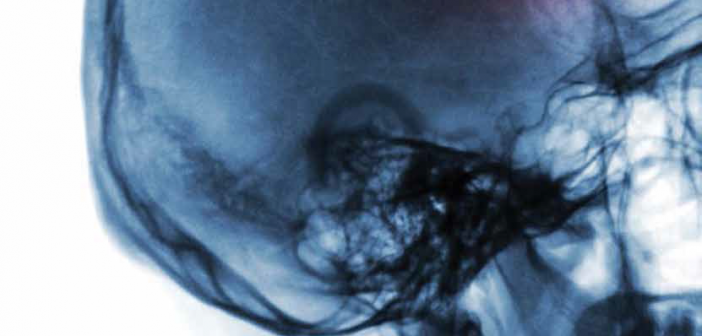WHY DO STROKES HAPPEN?
Preventive measures you can take
When Jonathan, 38,suddenly started feelingsome weakness on oneside of his face, and losinghis balance, his wifefeared he was getting a stroke. Suddenly,his speech became blurred, in addition,Jonathan started experiencing visionproblems in both eyes. His wife’s fearswere soon confirmed; these were primarysigns of a stroke. It is important toremember that strokes can result in longtermhealth complications. Dependingon how fast it is diagnosed and treated,someone can experience temporary orpermanent disabilities after a stroke.
What is a stroke?
A stroke is a condition in which poorblood flow to the brain results in celldeath. There are two main kinds ofstroke: ischemic, due to lack of bloodflow, and hemorrhagic, due to bleeding.
The consequence is that part of the brainends up not functioning properly. Certainpeople may just have a momentaryinterruption of blood flow to the brain(transient ischemic attack, or TIA) thatdoesn’t cause permanent damage.Treatments vary, depending on whattype of stroke you get.
What are the maincauses of a stroke?
Ischemic stroke is causedby obstructions or taperingof the arteries that deliverblood to the brain, resultingin ischemia. Ischemia isseverely reduced blood flowthat destroys brain cells.These obstructions are normallycaused by blood clots, which canbe formed in the brain arteries.
What are the warningsigns of a stroke?
If you experience a swift numbnessor weakness in the face, arm or leg(in most cases this happens onone half of the body), shouldyou realize you suddenly havetrouble talking, your eye visionis suddenly bad, loss of balanceand problem with coordinationas well as weakness, and a badheadache, you should knowyou are in danger of a stroke.
When should youget concerned?
Medical News today,says you should callthe doctor whenyou notice: Facedrooping: If theperson tries tosmile, does oneside of the facedroop? Armweakness: If theperson tries to raiseboth their arms, doesone arm drift downward?Speech difficulty: If theperson tries to repeat asimple phrase, is their speechslurred or strange? They advisethat if any of these signs areobserved, you should contactemergency services. It restatesthat the faster a person withsuspected stroke receives medicalattention, the better their prognosis willbe, and the less likely they will be toexperience permanent damage or death.
Risk factors for stroke
As with many other diseases, there arecertain factors that pre-dispose you to astroke. There are those you can changeand those you cannot change. Factors youcan’t change include: Age, sex and race/origin. While factors you can changeinclude, lowering your blood pressure,exercising, not smoking, avoiding obesity,taking alcohol moderately, and treatingatrial fibrillation – (the most commontype of heart arrhythmia (irregularheartbeat) that can interrupt the normalflow of blood. This interruption means theconditions put you at risk of blood clotsand stroke). Others are diabetes (treatit), High cholesterol (control it), Sicklecell disease, use of oral contraceptives,presence of other cardiovascular diseasesand a salty diet. Obstructive sleep apnea(you can take medications for it) migraine,drug abuse, gum disease and certaininfections, are risk factors which areharder to change. It is always importantto control the things you can change.
The role of massage
Massage is also good for you. Accordingto Mayo Clinic, massage is a general termfor pressing, rubbing and manipulatingyour skin, muscles, tendons andligaments. Massage may range from lightstroking to deep pressure. It notes thatmassage is generally considered part ofcomplementary and integrative medicine.It’s increasingly being offered along withstandard treatment for a wide range ofmedical conditions and situations. Studiesof the benefits of massage show that it isan effective treatment for reducing stress,pain and muscle tension. Other studieshave shown that massages can boostblood flow to an affected area, particularlyfor stroke-related muscle problems.It has been known to decrease pain,increase health, and improve movementafter stroke. External counter-pulsation(ECP) treatments have been known toencourage recovery in people who havesuffered an ischemic stroke.In an article titled get Pumped upwith EECP (Enhanced ExternalCounterpulsation) Julian Whitaker, MDexplains how EECP works. He says: Youlie on a table and compression cuffs arestrapped around your legs, from ankles tothighs. You’re also hooked up to a heartmonitor. Once treatment begins, the cuffssequentially inflate and deflate in syncwith your heartbeat, and your legs arerapidly and rhythmically squeezed frombottom to top. Sounds simple, and it is.But let me tell you, this is powerful stuff.The MD notes that it’s not surprising thatEECP increases blood flow throughoutthe body during treatment—all thatsqueezing dramatically boosts circulation.What is truly remarkable are EECP’slong-term benefits…when patients withangina- undergo a full course of 35 onehourtreatments, they often say goodbyeto chest pain and are able to avoid angioplasty—and even bypass surgery. (Angina is a chest pain or discomfortcaused when your heart muscle doesn’tget enough oxygen-rich blood. It mayfeel like pressure or squeezing in yourchest. The discomfort also can occurin your shoulders, arms, neck, jaw, orback. Angina pain may even feel likeindigestion; heart.org). EECP does morethan improve symptoms of serious heartdisease. It also saves lives, according toa study presented at a recent AmericanCollege of Cardiology meeting. In adifferent study, some researchers in HongKong found that apart from the onehourECP treatments for 35 days, this





2 Comments
I like the information shared….
This information is so useful, keep it up